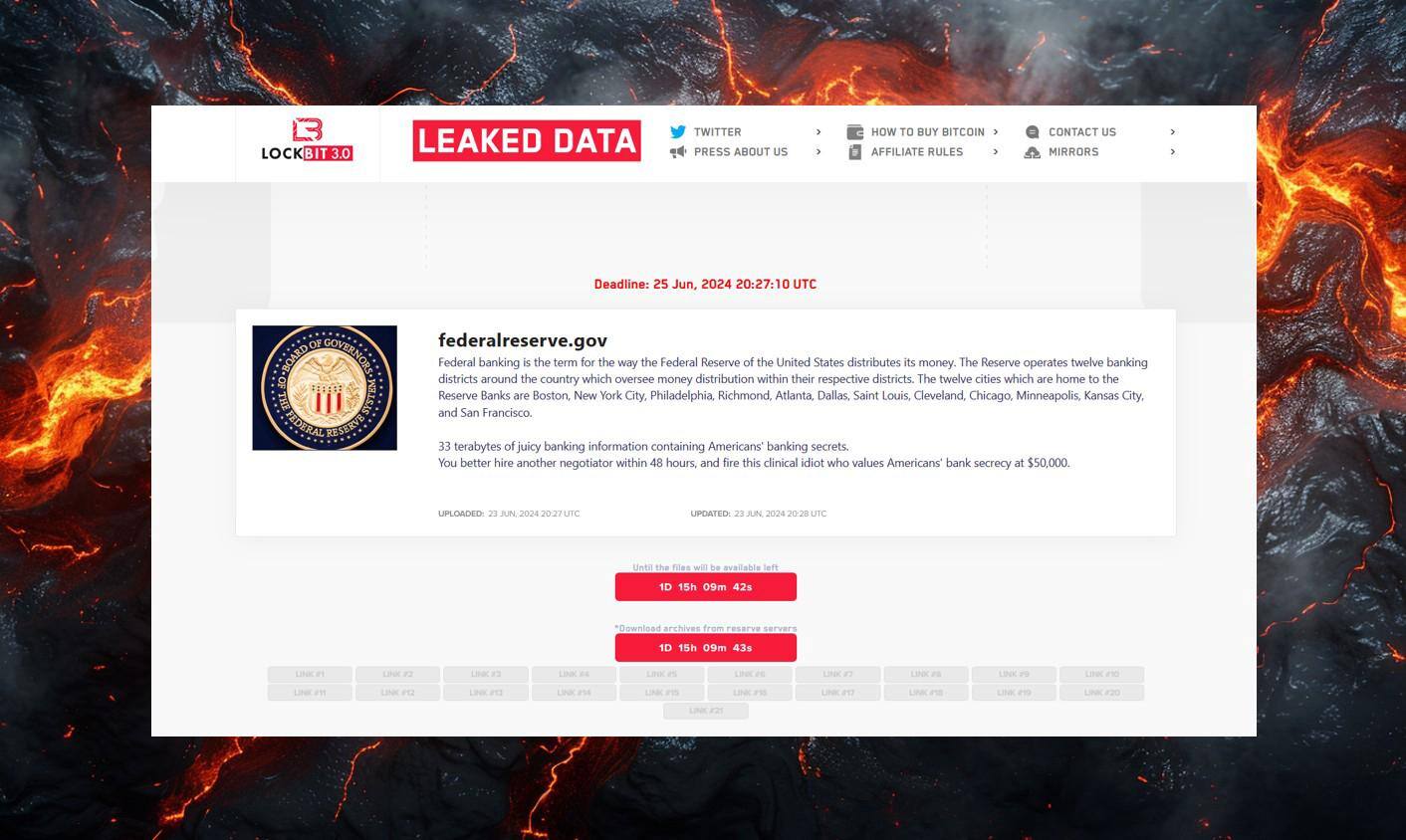3 min read
WHAT DID WE LEARN AT THE ACRONIS #CyberFit SUMMIT?
WHAT DID WE LEARN AT THE ACRONIS #CyberFit SUMMIT?We recently sponsored the Acronis #CyberFit Summit at Acronis’ HQ in Schaffhausen, Switzerland,...

In a major development in the cybersecurity landscape, the infamous ransomware group Lockbit 3.0 has taken credit for a cyberattack on the United States Federal Reserve. This announcement was made via a post on the Dark Web leak site linked to the ransomware group, causing widespread concern across both financial and governmental sectors.
On June 23, 2024, at 20:27 UTC, Lockbit 3.0 announced that it had breached the Federal Reserve's systems, obtaining an astounding 33 terabytes of sensitive banking information. This data allegedly includes confidential details of American banking activities. If confirmed, this would mark one of the most significant breaches of financial data in history.
The potential fallout from this breach is enormous. If the claims are true, exposing such a vast amount of sensitive information could severely impact individual privacy, financial stability, and national security. The Federal Reserve, which oversees the nation’s monetary policy, regulates banks, and maintains financial stability, is a crucial part of the U.S. financial infrastructure.
As a result, financial institutions, cybersecurity experts, and government agencies are on high alert. This attack highlights the vulnerabilities within even the most secure and essential systems. Beyond the immediate threat of data exposure, it significantly risks undermining confidence in the U.S. financial system.
LockBit 3.0, also known as LockBit Black, is a notorious ransomware variant that's part of the LockBit ransomware family. It first appeared in June 2022 and has been a significant headache for cybersecurity professionals ever since.
The ransomware itself is quite sophisticated, using various techniques to evade detection and hinder analysis. For instance, it scrambles its implementation to make it difficult for security researchers to study its behavior. It also uses a variety of anti-analysis techniques, such as stopping the flow of events to an attached debugger, which makes it harder to understand how the ransomware works.
LockBit 3.0 is particularly dangerous because it can encrypt and exfiltrate all the files on an infected device. If the victim doesn't pay the ransom within a certain timeframe.
The alleged cyberattack on the Federal Reserve by LockBit 3.0 is a stark reminder that even the most secure institutions are not immune to cyber threats. As the situation unfolds, it will be interesting to see how the Federal Reserve responds. And let's not forget the broader implications for US national security and financial stability. If a group of hackers can infiltrate the Federal Reserve, what's stopping them from targeting other critical infrastructure? This incident should serve as a wake-up call for all sectors reliant on digital infrastructure. It's time to take cybersecurity seriously and invest in robust defences.
Get in touch with Accxia today

3 min read
WHAT DID WE LEARN AT THE ACRONIS #CyberFit SUMMIT?We recently sponsored the Acronis #CyberFit Summit at Acronis’ HQ in Schaffhausen, Switzerland,...

Accxia, Acronis, Arsenal FC, and Loughborough University presented "How to prepare for the never normal" at the prestigious Homehouse venue in...

Cyber attacks in the home office cause billions in damages The home office is an open door for cyber criminals, says the German Economic Institute....